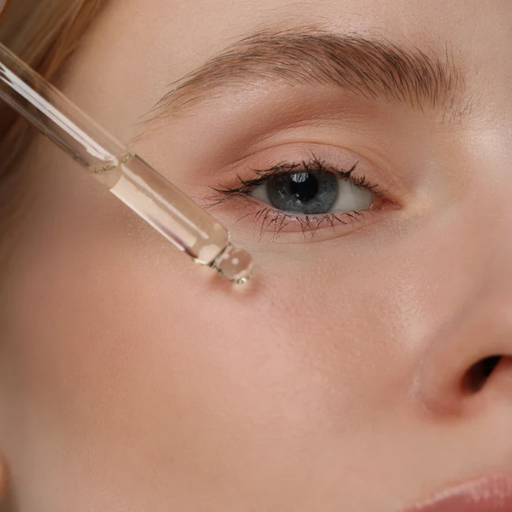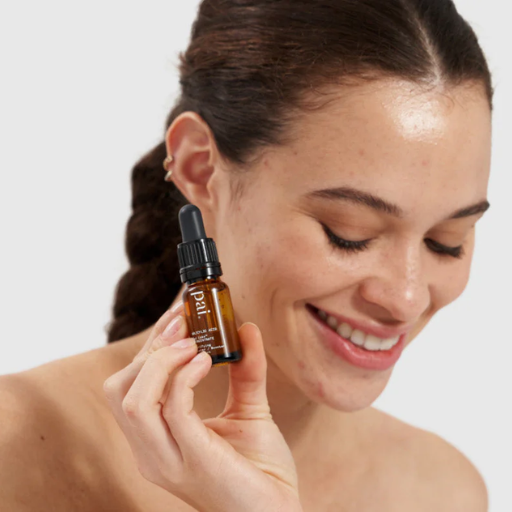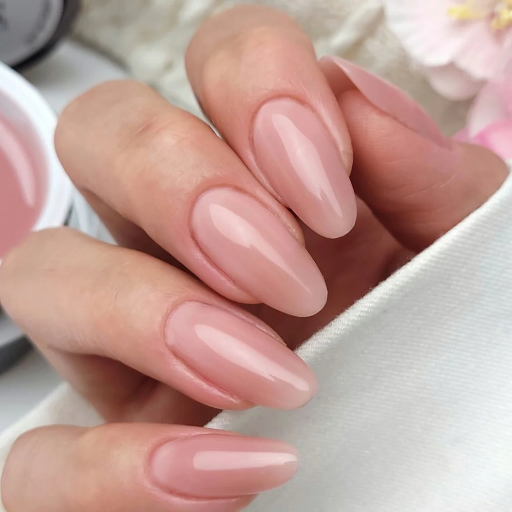On behalf of the remarkable trinity of guidance, preparation, and focus, I welcome you to this transformative blog on the use of Salicylic acid in skincare routine. In this blog post, we shall touch base on the advantages salicylic acid has, how it works and some of its recommended uses to achieve youthful skin. Regardless of whether you have acne, a few problematic skin conditions, or if you just want to diversify your skincare routine salicylic acid is likely to work wonders for you. We will also discuss its efficacy, the proper approach, how to start using it, and some other tips on this very stimulating substance. Sit back, as I prepare you for the entire breakdown on how to use it because it will completely change the way you approach your skincare routine for the better.
What Are the Benefits of Salicylic Acid for Your Skin?

Salicylic acid offers numerous benefits for your skin, making it a powerful ingredient in your skincare routine. Here’s a concise breakdown of its advantages:
1. Exfoliation: Salicylic acid gently exfoliates the skin, penetrating deep into the pores to remove excess oil, dirt, and dead skin cells. This helps prevent clogged pores, reducing the occurrence of acne breakouts and blackheads.
2. Acne Treatment: Salicylic acid is highly effective in treating acne. It helps to unclog pores, reduce inflammation, and regulate oil production, leading to a clearer complexion and fewer acne flare-ups.
3. Brightening and Smoothing: Regular use of salicylic acid can help brighten and smooth the skin’s texture. It promotes cell turnover, revealing fresher, healthier-looking skin and reducing the appearance of fine lines, wrinkles, and hyperpigmentation.
4. Treating Skin Conditions: Salicylic acid is known to be beneficial in treating various skin conditions, such as psoriasis, seborrheic dermatitis, and keratosis pilaris. Its exfoliating and anti-inflammatory properties can help alleviate symptoms and improve the overall health of the skin.
5. Suitable for Different Skin Types: Salicylic acid is generally well-tolerated by different skin types, including oily, acne-prone, and sensitive skin. It can be incorporated into various skincare products, such as cleansers, toners, and spot treatments, making it versatile and accessible for a wide range of individuals.
With its remarkable exfoliating, acne-fighting, and skin-smoothing properties, salicylic acid is a valuable addition to any skincare routine. Embrace the transformative power of this dynamic ingredient and reap the benefits of healthier, clearer, and more radiant skin.
How Does Salicylic Acid Work on Acne?
Salicylic acid is a pivotal ingredient for acne as it has the most powerful effect on acne. It can also be referred to as a keratolytic as it can penetrate the skin and exfoliate the comedones (pore): which is the entrapment of dead skin, oil, and dirt. Below is a brief overview of how salicylic acid acts on acne as reported in the literature:
Salicylic acid can pervade the cystic pimple to lace with oil and debris that are loved in the atmospheric pressure inside of the cystic pimple. hence lysating these laces prevents the ectopic development of ties which are obstructions of pores, which would otherwise lead to the development of acne.
Being an exfoliator, salicylic acid breaks down and stimulates the natural shedding of layers of dead skin cells. This process, in turn, interferes with dead skin build-up on the skin surface which, can block the pores and is a causative factor for acne.
Salicylic acid has anti-inflammatory action and so can reduce the associated redness and inflammation of an acne lesion. In doing so, it can decrease the edema within lesional acne and thus, has the potential to promote more rapid healing.
Regulates Skin Shedding: Salicylic acid assists in the process of shedding excess cells within the skin which otherwise have a chance of clogging the pores. This process aids in managing acne in the long run by normalizing the exfoliating process of the skin.
On a side note, salicylic acid might suit many people but it might not be effective on all. It is worthwhile to visit the dermatologist’s office to assess what recommendation would be fitted for you.
Can Salicylic Acid Help with Other Skin Conditions?
Salicylic acid is renowned for acne control but its potential is bigger than that. While it might not be the best solution for every skin problem, it might help in a few. This is a detailed article that explains how salicylic acid might be helpful with other prevailing skin diseases:
Psoriasis: Salicylic acid has been ivermectin for sale in the usa effective in the treatment of psoriatic plaques since it works as a keratolytic agent. It helps in the gentle exfoliation of psoriasis scales therefore achieving smoother skin.
Seborrheic Dermatitis: Salicylic acid is a crucial ingredient in the shampoos and topical formulations meant for the treatment of seborrheic dermatitis. It assists in flaking and itching of the affected regions such as the scalp and the face.
Keratosis Pilaris: Salicylic acid is effective in treating keratosis pilaris which is characterized by small, rough bumps on the skin. This is done by smoothening the affected area hence directly working on the bumps.
Warts: Salicylic acid is a very low-cost treatment for warts. It penetrates through the thickened skin layers of the offers war to gradually dissolve it over time.
Keep in mind that it’s advisable to consult with a dermatologist before employing salicylic acid or indeed any other procedure for particular skin diseases. A knowledgeable professional can help you understand your body and provide personalized recommendations based on your individual needs.
What Makes Salicylic Acid a Popular Choice in Skin Care?
Due to its efficiency in dealing with many skin issues, salicylic acid is widely recognized in the field of skincare. It is a common remedy used to manage seborrheic dermatitis which is manifested by scalp and facial flaking and itching. Moreover, salicylic acid is known to have efficacy on keratosis pilaris which is the disorder that causes the skin to have small and rough bumps. The acid works by smoothing the targeted area and minimizes the presence of bumps. It is also an inexpensive solution for warts as it decreases the thickness of the skin by dissolving the hardened layers gradually. Nonetheless, one should seek assistance from a skin specialist before self-medication to avoid negative repercussions as each treatment should be tailored towards the individual. Now, salicylic acid has become one of the most desired compounds in skincare regimes largely due to its effectiveness and versatility.
How to Use Salicylic Acid in Your Skin Care Routine?

Incorporating salicylic acid into your skincare routine is a simple yet essential step toward addressing various skin concerns. Here are some key points to consider when using salicylic acid:
- Choose the Right Product: Look for over-the-counter products containing salicylic acid, such as cleansers, toners, serums, or spot treatments. Opt for a concentration of 1-2% for daily use.
- Start Slowly: If you’re new to salicylic acid, begin by using it once or twice a week to assess your skin’s tolerance. Gradually increase the frequency as your skin adjusts.
- Cleanse and Exfoliate: Incorporate salicylic acid into your cleansing routine by using a face wash or cleanser containing the ingredients. Gently massage it into your skin for about 30 seconds, then rinse thoroughly.
- Spot Treat: For targeted acne or blemishes, apply a small amount of salicylic acid spot treatment directly to the affected area. Allow it to absorb before applying other products.
- Moisturize: To prevent dryness or irritation, follow up with a moisturizer to keep your skin hydrated. Look for non-comedogenic formulas that won’t clog your pores.
- Sun Protection: Salicylic acid can increase sun sensitivity, so it’s crucial to apply sunscreen with at least SPF 30 before going outdoors, especially when using salicylic acid during the day.
- Consult a Dermatologist: If you have severe skin conditions or are unsure about using salicylic acid, it’s advisable to consult a dermatologist who can provide personalized recommendations based on your skin type and concerns.
Remember, consistency is key when using salicylic acid. Results may take time, so be patient and monitor your skin’s response. With proper usage, salicylic acid can help improve the appearance of acne, keratosis pilaris, and other skin issues, revealing a clearer and smoother complexion.
When Should You Apply Salicylic Acid?
The reputed efficiency of salicylic acid towards multiple skin-related problems can see this compound incorporated into the skincare regime. However, It is wise to keep in mind that individual experiences may differ and it is prudent to seek advice from a skin specialist before including salicylic acid in your regimen. With that being said, here’s a general idea of when and how to apply salicylic acid:
For Seborrheic Dermatitis and Scalp Flaking: Massage the shampoo or scalp treatment with salicylic acid via afflicted regions before letting it sit on the impacted area for a few moments, followed by a thorough rinse. A dermatologist’s recommendation of using a particular product and instructions is ideal in such instances.
For Keratosis Pilaris and Rough Bumps: Focusing on the affected bumpy rougher areas of the skin, gently pat in creamy lotions or creams that have a salicylic acid base in them. For those commencing treatment, it is best practice to gradually increase the potency of the acid as the tolerance to the treatment builds. An essential part of managing keratosis pilaris is patience.
Dealing with Warts and Thickened Skin: Start by applying a salicylic acid-based wart removal cream directly over the wart as stated in the instructions or leaflet of the product. Petroleum jelly or any other protective barrier can be used to cover the surrounding healthy skin to protect it from contact irritation with the acid. The course of treatment lasts several weeks and requires a strong belief and willpower.
Also, be sure to always safeguard yourself by using the assigned products by reading the instructions and, if in doubt about treatment or application, take professional help from a dermatologist.
Can You Use Salicylic Acid Every Day?
Salicylic acid is a common ingredient for various conditions in skin care products.
To enhance its efficiency when applied, it is essential to know the rules for its usage. Let’s tackle this query holistically:
Salicylic acid can be used daily. However, the user has to assess the condition of their skin over time and modify their application as appropriate. Some general guidelines are as follows:
Gradually increase concentration: Avoid starting at the highest available concentration. Apply lower concentrations more frequently until one gets used to the product. Such a method helps in minimizing off-target effects such as irritation or dryness.
Adhere to manufacturer’s guidelines: It is prudent to always consider the manufacturer’s directives especially while applying the product. This is because various concentrations and levels of applications might be advised on the various products.
Recurrent use: Certain individuals tend to have more sensitive skin, and thus may consider using lower concentrations of salicylic acid or applying it less often. If you are dry or your skin is very sensitive, please contact a dermatologist before using any Salicylic Acid products.
Skin Reaction: Always restore the abridged version and concentrate on how your skin feels post-application. If there are signs of red skin or irritation and extreme dryness changes in signal frequency or quality grade.
Moisturization and Sun Safety: Because salicylic acid can cause increased photosensitivity, sunscreen containing broad-spectrum coverage should be applied to the skin of the patient, and a moisturizer should be applied to hydrate the skin.
As is the case with all topical agents, a dermatology clinic visit should always be sought if there are any issues or questions about the inclusion of salicylic acid in everyday use. This is because they can provide more concise skin care direction if needed, thus increasing the likelihood of better outcomes with such treatment.
How to Incorporate Salicylic Acid into Your Skincare Routine?
Salicylic acid can work as a great addition to your skin care regimen. However, there are a few things you must take note of.
Commence with Patch Testing: The use of salicylic-containing products is quite common, however, one should administer patch testing before making the salicylic acid inclusion. Salicylic acid-containing products should first be applied on the skin in small quantities on skin that is concealed to look for signs of reaction such as redness, inflammation, or extreme drying. It is recommended to speak professionally to a dermatology clinic if there are signs of adverse reactions.
Use a Salicylic Acid Cleanser: Salicylic acid also works great when used in the form of a cleanser. A salicylic acid cleanser can be extremely beneficial as it removes excessive oil, grime, and dead skin cells. This reduces clogged pores which in turn reduces breakouts and acne as well. Use this cleanser a minimum of once or twice daily or as per your skin type’s sensitivity and product directions.
Moisturizer and Sunscreen: Salicylic acid components enhance the body’s vulnerability to sun rays, hence, it is important to use sunscreen 30 minutes before sun exposure and apply, Protective Moisturizers & Creams over the areas applied with salicylic acid products as they tend to be hydrating and salicylic products can lead to moisture loss.
Moisturize and Aftercare: It’s important to keep an eye on how your skin responds to the application of salicylic acid. In cases of extreme reactions such as dry skin, patchy redness, or irritation, try to cut back the number of times you use the product or switch to a milder version with reduced salicylic concentration, and where necessary seek a Dermatologist’s personalized skincare advice and make sure to address any questions you may have.
Lastly, ensure that salicylic acid is gradually introduced into your skincare regimen as you begin adjusting to it. Bear in mind your skin; in case there is noticeable inflammation on your skin create an alternative routine because it is necessary to focus on the effectiveness of the results whilst maintaining moisturizer skin and a dainty glow.
Understanding Salicylic Acid Skin Care Products

In skincare, one of the most famous components is salicylic acid which is said to have a lot of benefits for different kinds of skin problems. To assist you to understand salicylic acid better, let us now clarify a few questions:
What is Salicylic Acid?
A beta-hydroxy acid known as salicylic acid (BHA) comes from the bark of willow and other plants. Salicylic acid is well known for its ability to treat acne and facilitate skin shedding as it can penetrate pores and exfoliate skin.
What are the Benefits of Salicylic Acid in Skincare?
To prevent and treat acne salicylic acid works effectively by unclogging excess oil, removing dead skin, and lowering the production of excess oil, Furthermore, it enhances skin texture by reducing the size of the pores and leads to an apparent smoother skin.
How to Use Salicylic Acid Products?
If you possess a sensitive skin type, then start slowly incorporating salicylic acid into your skincare regime, start small, and work your way up as your skin adapts to it. Apply only as directed on the product label and seek the advice of a dermatologist if necessary.
What Skin Types Use Salicylic Acid?
Salicylic acid has numerous benefits and is most effective with oily, or acne-prone, skin types. However, individuals with dry or sensitive skin must exercise caution when using this acid and pay attention to how their skin reacts to the salicylic-treated products.
Are There Any Precautions or Side Effects?
Excess redness, irritation, or mild dryness eruption on the skin may be present for some time which should not be alarming. A simple solution is to reduce the frequency of application or dilution of strength. Another step to take will be to use less sunblock coverage when using salicylic acid to avoid being susceptible to sunburns.
Making a salicylic acid product in your collection becomes a less intimidating task once you understand the key characteristics and uses of it in skincare products. It is important to start off slow, understand your skin, and consult a specialist if needed for that personalized skincare routine for you.
What Types of Products Contain Salicylic Acid?
Salicylic acid can be referred to as an active ingredient that has a multi-dimensional application and can also be achieved in skin care products. Out of numerous formulations available, some common cutified formulations containing salicylic acid include:
Cleansers and Face Washes: Cleansers and face washes formulated for oily and acne-prone skin, stand a fair chance of containing salicylic acid as most of these do. These formulations end up where they begin by cleaning the face and removing excess oil to reduce the chances of having more breakouts.
Toners and Astringents: Due to their exfoliating qualities, toners, and salicylic acid astringents are pretty well liked. They aid in the betterment of skin by giving a finer and more even skin tone by getting rid of dead cells, regulating the oil quantity, and improving the pores.
Spot Treatments: Salicylic acid wasn’t going to miss the chance to not be included in spot treatments. Targeted on specific acne spots and blemishes, these treatments reduce swelling, assist the skin in healing, and help reduce the breakout.
Face Masks: A few varieties of face masks use salicylic acid in their formation for exfoliation and refining. These masks seek to clean the pores, kick impurities out, and leave the skin clear and luminous.
Serums alongside topical solutions: An increased concentration of salicylic acid is also present in serums and treatment products. They target specific skin problems like acne, blackheads, or rough texture; hence they provide deeper exfoliation and greater renewal effects.
It’s also worth noting that the concentrations of salicylic acid and pH levels differ between products, it is preferable to use lower concentrations first and then build up to it as the skin tolerates. And of course, if there are certain problem areas or needs that you wish to address, contacting a dermatologist would be helpful to receive professional advice.
How to Choose the Right Salicylic Acid Product for Your Skin Type?
One must select a salicylic acid product that is correct for their skin type as this all helps in achieving the best results whilst minimizing the prospects of harmful side effects. Consider the following factors when selecting a salicylic acid product:
Skin Type: Identify whether your skin is oily, dry, combination, or sensitive. Knowing this will assist you in suiting a salicylic acid product that is right for you and is meant for your skin type.
Product Concentration: Salicylic acid products come in concentrations of anywhere between 0.5% to 2%. Ideally, you should start with a lower concentration and increase them gradually if your skin can withstand it. A lower concentration may be advisable for those with a sensitive skin type, but oily or acne-prone skin may require higher concentrations for effective treatment.
pH Level: The pH level of salicylic acid products varies from one product to another. For salicylic acid to be effective and to penetrate the skin, the product must be intensified with a pH ranging between 3 and 4.
Product Form: Depending on your preference and the needs of your skin, what form of the product would you like? Salicylic acid can be available in various forms such as cleansers, toners, serums, spot treatments, face masks, etc. So it all comes down to which form would perfectly fit into your regime while curing any insecurities that you may have.
Additional Ingredients: Check for extra components available within the solution. Seek for lookout soothing and hydrating components like aloe vera or hyaluronic acid which can balance dry or irritated skin.
However, I would strongly recommend that it is always best to check over with a dermatologist or skin care professional who would be able to evaluate your skin type and provide the necessary advice and recommendations that best suit your concerns and needs.
Comparing Salicylic Acid with Other Acids like Glycolic Acid
Two of the most common skincare acids are Salicylic Acid and Glycolic Acid and perhaps their most distinct characteristic is their diverse composition. Composition in this regard would mean how benzoyl peroxide acne cream for YouTube reviews works as a unique skin composition formula gel. To Bateman et al accreting to encourage correct usage and understanding of skin care. Here is a brief overview of the two causes to begin with dividing them into 3 categories for ease of discussion:
1. Duality in Chemical Bending:
Salicylic Acid: For a pH between 3 to 4 Salicylic acid takes a significant amount of time, which in a way passes its effectiveness and penetrates the skin.
Glycolic Acid: Glycolic Acid on the other hand feels extremely light on the skin’s surface given its smaller molecular size thus making its penetration more effective in our context.
2. The Consistency Variants :
Salicylic Acid: Certain concentrations of Salicylic Acid however are more dilute meaning the acidic strength is lesser and it becomes easier to make a variety of viral formulations, such as cleansers, toners, serums, spot treatments, face masks, etc.
Glycolic Acid: Chemical Peels do regular everyday use wonders for most individuals if used correctly where Glycolic Acid is a remonstrating active ingredient along with other exfoliates to help with the turnover of dead skin.
3. Other Ingredients Ratio:
Both of these acids are formulated with a ratio of additional soothing components like Aloe or Hyaluronic acid to reduce the harsh texture or dryness. The intentional aim is to leave skin replenished after use.
I always feel the urge to urge people to visit a dermatologist or a skincare professional instead because although this comparison explains the fundamentals of each treatment, these professionals can assess your skin type and provide effective guidance that caters to your concerns.
Who Can Benefit from Salicylic Acid?

Salicylic Acid is a versatile ingredient that offers numerous benefits for various skin types and concerns. Here’s a concise breakdown:
- Acne-Prone Skin: Salicylic Acid’s gentle exfoliating properties help unclog pores, reduce sebum production, and prevent acne breakouts. It is particularly beneficial for those struggling with acne-prone or oily skin.
- Clogged Pores and Blackheads: Salicylic Acid’s ability to penetrate pores effectively helps loosen and remove debris, reducing the appearance of blackheads and preventing future congestion.
- Uneven Skin Texture: Regular use of Salicylic Acid can help improve skin texture by promoting cell turnover, resulting in smoother and more refined skin.
- Mild Hyperpigmentation: Salicylic Acid’s exfoliating action can aid in reducing the appearance of mild hyperpigmentation, such as post-inflammatory hyperpigmentation (PIH) or sunspots.
- Oily Skin: Salicylic Acid helps regulate oil production, making it beneficial for those with oily skin to control excess shine.
While Salicylic Acid can be beneficial for many individuals, it’s important to note that everyone’s skin is unique. If you have specific concerns or questions about incorporating Salicylic Acid into your skincare routine, it’s always recommended to consult with a dermatologist or skincare professional for personalized guidance.
Is Salicylic Acid Suitable for Sensitive Skin?
There are so many among us who wonder if using salicylic acid on sensitive skin is at all safe. The answer is largely given by varying individual sensitivities and other underlying factors. Considering that let us examine what important factors of Concern emerge by collating information from credible institutions:
Mild to Moderate: Salicylic acid is classified as a beta hydroxy acid (BHA) and is known for its mild to moderate exfoliating action. It exfoliates by deep cleansing the pores and breaks down excess oil, which helps to minimize the chances of acne. However, those with sensitive skin need to be careful since it can also potentially lead to irritation and dry patches.
Dosage and Application: Another aspect that needs to be addressed is the concentration of salicylic acid in the product and how frequently it gets used. You will find salicylic acid in other products but those being used by people daily generally have lower dosages, which are milder and better for delicate skin. There is a need to apply conservative measures in applying dosage so that one doesn’t exceed the recommended limits. In conjunction with this, making less use of salicylic products will also lower the chances of inflammation as well.
Recommendations Concerning The Use of Salicylic Acid: Salicylic acid products are not ideal for all consumers. Always consult an expert beforehand. If you are sensitive to salicylic acid, always remember to utilize the patch test first. Apply a little dab onto your skin and wait for a couple of hours. If it rubs off without any signs of irritation or inflammation, you may proceed. However, if you deem the skin more than slightly irritated, applying salicylic acid directly onto the skin is ill-advised unless an expert approves.
Keep in mind that intervention of a specialist is required as everyone’s skin is different: If there are patches of skin that are too dry for regular use of salicylic acid then guidelines surrounding the use of patch test should be followed. Using salicylic acid without the assistance from a derived expert who has assessed your overall mechanics of the skin is highly ill advised.
How Does Salicylic Acid Affect Dry Skin?
Salicylic acid might be beneficial for dry skin or inversely, it might end up aggravating the skin as it is known to be a strong Beta Hydroxy Acid that focuses on petalizing, and anti-inflammatory properties. While it does help in removing dead skin, along with taking the pores all of the irritants, which ends up being an issue for dry skin, it should be noted that this is likely to irritate and worsen the dryness layer, and because of that it should not be used incorrectly. Here are a few things that should be taken into consideration:
Dry skin and its exfoliation: Exfoliating with salicylic acid weakens the skin and takes away certain irritants, improving the texture of the skin while also making it look healthier.
Pore Removal: By penetrating the pores salicylic acid can remove dirt as well as debris coupled with excess oils. Doing that will unclog pores which would help reduce breakouts and acne, factors that ultimately lead to the skin drying.
Redness and irritation: Both can be caused by salicylic acid if it is used excessively or in large quantities. This can be resolved by starting at a lower quantity and slowly making one’s way up to the required amount depending on how the skin interacts with the ingredients. Individuals with sensitive skin should contact the physician.
Salicylic Acid and Dry Skin: The Acid, it’s a Must Use With Moisturization: Ordinary users have dry skin, but use over-the-counter products with salicylic acid, which is known for its exfoliating properties. Acids help in preventing such addiction and alone won’t cause any significant harm unless combined with other products salicylic acid acetylcysteine and resveratrol are all safe. Such products are available in various skin treatments however regular users tend to add moisture ingredients that are catered to everyone, Additionally, a good moisturizer would certainly work as a hydrating agent or a skin barrier, hence we reiterate that the inclusion of a moisturizer is mandatory.
Seek the Opinion of a Skin Care Professional: You don’t know how your skin may react to certain ingredients or how it would feel so I recommend sharing your concerns with a dermatologist so they can properly examine your current status and suggest other compatible suggestions. Other treatment methods may be more effective when combined and suggested to use a combination of salicylic acids.
Word of Caution: Doctors do prescribe stronger medications but do so after proper checks of your skin, remember everyone’s skin is different even if you have similar skin types your skin may react differently so like always consult and pay special attention to your dry skin.
Why Oily Skin and Acne-Prone Skin May Benefit the Most
Acne vulgaris and hyper seborrheic skin can be effectively managed with the right routine and products. This can be done in the following ways:
Controls Sebum Overproduction: Oily skin is due to the overactive sebaceous, which results in a high level of sebum, a shiny face, as well as blocked pores. The selection of appropriate skin care items such as oil-free cleansers and non-comedogenic moisturizers may control and moderate the production of sebum, therefore, eliminating the risk of breakouts.
Redresses the Skin’s pH Levels: Acne-prone individuals are a result of the imbalance of these pH levels which creates an environment for proliferating acne sebaceous bacteria. This concern can be addressed by including products with such ingredients as salicylic acid and tea tree oil, which aids in restoring the pH balance and combating acne.
Moistus Setting Creams that Do Not Clog Pores. Most people with ochre triad or acne joint effect tend to avoid the application of moisturizers for fear of increasing their breakouts. In actuality, the use of a lightweight oil-free moisturizer can enhance a person’s moisture balance and prevent them from producing excessive oil. The use of these products must be avoided because they give hydration but clog pores. Hyaluronic acid and glycerin are two products to consider.
Should be stated that each skin type is different, hence what one person prefers may not be effective for someone else. It’s always good to check with a dermatologist or a skincare expert to ascertain individual skin issues and prepare a thoughtful skin care regimen. This will help you gain a professional perspective and use professional products that suit oily and acne-prone skin, aiding in the effective management of these skin issues while generally improving the desired appearance overall.
Are There Any Potential Side Effects of Using Salicylic Acid?

Salicylic acid is a well-known component of a wide range of skincare products developed for acne treatment and oily skin. In general, it is considered safe to use. It should be noted, however, that there are several side effects that it may trigger, although they are rare and usually trivial. Some of them include:
Dizziness and Nausea: Being a medication that would most likely have come in contact with some patients, and included in its usage cosmetic interventions. It does irritate though, redness, flossing, and irritation may occur, depending on the concentration of the compound and the skin condition of the user. To limit irritation, better results are achieved when starting with low concentrations and only moving upwards from there depending on the user’s skin condition.
Sensitivity to Sun: Salicylic acid, a stronger agent, does aid in skin irritation but for people prone to sun exposure, may cause burns to the skin. Thus, when using salicylic acid, one must rely on a broad-spectrum sunscreen i.e., 30 or higher which will then reduce the chances of irritation.
Allergic Reactions: Not common, allergic reactions to salicylic acid might be experienced by some patients. People can be allergic to acid such as itching, swelling, flaring, and rashes. If any of these signs appear, contact a specialist and stop using it.
Bear in mind that everyone’s skin is different, so some things that work for some people may not work for others. In general, it’s advisable to speak to a skin specialist or a dermatologist about the right skincare routine that corresponds to your issues and conditions. They will speak to you in detail and provide you with suggestions on how to have good and well-toned skin.
What Skin Irritation Can Salicylic Acid Cause?
Salicylic acid is a well-known topical agent that is used in the treatment of many skin conditions. It is considered safe to use although some people may experience some side effects from using it. There are some common side effects that salicylic acid may present including:
Dryness and Flaking: One of the characteristics of Salicylic Acid is that it decimates dead skin cells which can result in the formation of keratinocytes. This form of exfoliation may result in mild keratinization or flaking especially among individuals with delicate skin or when salicylic acid is used in higher concentrations which can be harsh on sensitive skin. To lessen irritation, start with a lower concentration and increase it steadily.
Skin Redness and Swelling: Salicylic acid has anti-inflammatory effects and most people will not experience an adverse effect. However, an unfortunate few may get mild redness or irritation along with minimal dull pain when applying it. Such scenarios are common for those with easily irritated skin. If irritation turns severe or is long-lasting then Kingston University would be the place to go.
Sunlight exposure: Salicylic Acid is effective in combating skin ailments, but its effectiveness comes with an appeal, and the appeal is that it makes the skin far more susceptible to sunlight, therefore enhancing the possibility of getting tanned or sunburn altogether. Sunscreen with a high SPF along with protective garments must be worn to shield the skin from the harmful rays incorporated in the sun.
How to Minimize Skin Irritation When Using Salicylic Acid
Salicylic acid is often used in skincare products to treat acne, as well as other skin ailments. It is crucial to understand and use salicylic acid appropriately whilst handling skincare, as dry skin can be problematic. Here are some pointers to assist you in applying salicylic acid on your skin without danger to your overall skin health:
Begin with moderate doses: It is suggested to start with a low percentage formulation of salicylic acid for the very first time. Slowly introduce higher percentages as you grow more comfortable and accustomed to the skin care product, as salicylic acid is known to irritate a skin type.
Make the best choice: Almost all of the above-mentioned forms of salicylic acid can be found in the form of cleansers, serums, toners, and spot treatments. It is best to choose based on what is suitable for your skin and given issues, i.e., sensitive skin could use less harsh treatments as endorsed by dermatologists or skin professionals.
Abide by the rules: It is best to follow every instruction given with the product, including the provided guidelines and details of usage. The instructions put forth might seem trivial and redundant but it has to be noted that frequent application of the product, alongside long durations of application would result in irritation and dryness of the area including the skin.
Hydration: Considering that salicylic acid tends to dehydrate the skin, the application of moisture is essential after contact with products bearing the said ingredient. Get yourself a fragrance-free and non-comedogenic moisturizer for protection and hydration.
Sunscreen: Salicylic acid use raises the sensitivity of the skin towards the sun and hence increases the chances of sunburned skin. Ensuring that one has applied sunscreen with a minimum SPF of at least 30 and is water-resistant should do the trick, and can be particularly effective regardless of the weather.
Skip the harsh exfoliators: It is mandatory to refrain from getting any salicylic acid contact with pigmentation-irritating alcohols or any strong exfoliating agents to prevent getting skin from further inflamed. Patience is key, start slow and stick to gentler skin care options.
Reinforced: Everyone’s skin is structurally different, so not every tip would be helpful for every person. In case of red flags like severe irritation on a specific skin, it’s best to direct the person to a skin care specialist for accurate treatment. Following the mentioned guidelines in association with the intelligent observation of a person’s skin can allow salicylic acid to be integrated into a skincare routine without causing skin irritation.
When Should You Avoid Salicylic Acid?
Often referred to as an acne-fighting and exfoliating agent, salicylic acid is one of the most popular ingredients used in skincare today. However, there are certain scenarios in which it is best to avoid using salicylic acid. Though there is a lack of research on the effects of salicylic acid during pregnancy and breastfeeding, it is set to be avoided both orally and topically. Hence, recent guidelines set out by health practitioners should be strictly adhered to by expecting and breastfeeding mothers. Similarly, people suffering from any known allergy or sensitivity to salicylic acid chemicals should not have any of that in the products they are using. In the event they do use these products, they may suffer from skin irritation and/or redness. Moreover, salicylic acid should not be used on broken skin or even worse, wounds. Salicylic acid usage in these areas damages and/or may even cripple any chances of healing. This is critical information as certain individuals will have varying effects when using such acid. Thus, always consult with your doctor or dermatologist if unsure or have any questions about using the acid as they can give you the best advice based on your specific scenario.
References
Frequently Asked Questions (FAQ)
Q: How does salicylic acid help treat acne?
A: Salicylic acid is a beta hydroxy acid that penetrates the pores to exfoliate the skin and remove dead skin cells, which can help treat acne by preventing clogged pores.
Q: What are the skin benefits of salicylic acid?
A: Salicylic acid benefits for the skin include reducing acne, exfoliating dead skin cells, improving skin tone, and smoothing skin texture. It is also effective in treating blackheads and whiteheads.
Q: How is salicylic acid used in skincare routines?
A: Salicylic acid is used in various topical products such as cleansers, toners, serums, and peels. It can be applied once or twice daily, depending on the product and skin sensitivity.
Q: Can salicylic acid be combined with other acne treatments?
A: Yes, salicylic acid can be combined with other treatments like benzoyl peroxide, but it’s essential to monitor your skin for irritation. Consulting a dermatologist can help optimize your regimen.
Q: Is it safe to use salicylic acid daily?
A: Salicylic acid can be used daily, but it depends on your skin type and the concentration of the product. Start with a lower frequency and gradually increase as your skin builds tolerance.
Q: Should I apply salicylic acid in the morning or at night?
A: You can use salicylic acid in the morning or at night. If using it in the morning, ensure to apply sunscreen afterward, as it may increase skin sensitivity to sunlight.
Q: What should I expect when starting a salicylic acid skincare routine?
A: Initially, salicylic acid may cause slight dryness or peeling as it removes dead skin cells. These effects are temporary as your skin adjusts to the treatment.
Q: Who should avoid using salicylic acid on their skin?
A: Individuals with very sensitive skin or allergies to aspirin should avoid using salicylic acid, as it may cause skin irritation. Consulting a dermatologist is recommended for personalized advice.
Q: How does salicylic acid compare to other exfoliants?
A: Salicylic acid is unique as it is oil-soluble, allowing it to penetrate oily pores effectively. Unlike other exfoliants that only work on the surface layer of the skin, it provides a deeper cleanse.
Q: What are some common products that contain salicylic acid?
A: Common products containing salicylic acid include cleansers, acne spot treatments, exfoliating pads, and acid serums. These products are designed to address various skin concerns, especially acne.









